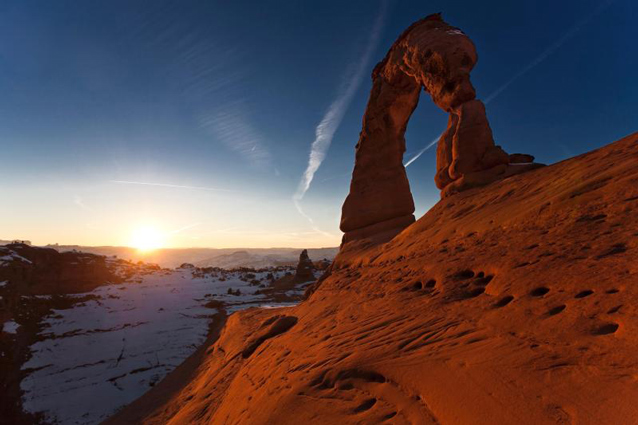Visitors to Arches National Park experience natural free-flowing waters and have water to quench their thirst, thanks to an agreement between the National Park Service and the State of Utah.

NPS/Jacob W. Frank
On average, Arches National Park receives about 9 inches of precipitation per year. Desert conditions and limited water sources in the West make this agreement crucially important for water users in Utah and to assure that the park can protect its natural and cultural heritage resources. Protecting the source of the water gives the park the flexibility to plan for the future and provide service to its customers, the American people and visitors from around the world.
The agreement recognizes a federal reserved water right for park administration and instream flows to protect water and water-related resources in perpetuity. The National Park Service agrees to subordinate its federal reserved right for instream flows to all valid existing water rights. The agreement also establishes a groundwater protection zone that includes lands outside of the park boundary to protect the springs and stream flows in Courthouse Wash, Sevenmile Canyon, and Salt Wash within the park.
Water rights in the West follow the doctrine of prior appropriation in which a person who uses water from a stream is senior in priority to those who use water from the same stream at a later date. This “first in time, first in right” water law requires the water right owner to divert water from the stream or aquifer for “beneficial” uses such as domestic, irrigation, stock watering, municipal, industrial, and hydropower. Senior water right owners may divert all of the water to which they are entitled before junior water right owners may divert any water. If a stream dries up not even the most senior water right owner gets any water.
Staff from the Natural Resource Stewardship and Science Directorate’s Water Resources Division negotiated eight water right agreements in Utah over the past 20 years. Other park units that have signed Agreements are Cedar Breaks National Monument, Golden Spike National Historic Site, Hovenweep National Monument, Natural Bridges National Monument, Rainbow Bridge National Monument, Timpanogos Cave National Monument, and Zion National Park. The National Park Service and State of Utah are also working on an agreement for Bryce Canyon National Park.
Tags
Last updated: February 5, 2018
